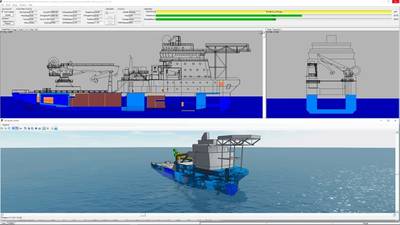Autoship Systems Corporation (ASC) of Vancouver, Canada announced that its onboard stability software Autoload is celebrating 25 years in the marine loading computer market. Installed on thousands of ships, rigs and platforms worldwide, Autoload can be found onboard virtually every type of vessel.
ASC said it adopted a simple yet sophisticated philosophy for developing Autoload from the start: the program must be simple to use yet apply accurate mathematical analyses to all calculations. Thus, Autoload provides the user with a quick and accurate picture of the vessel's current stability status, loads and important margins. The user can then focus on critical decisions while leaving the mathematical complexity to the computer. The development of the advanced 3D based user interface has benefited from ASC's 35 year history of developing CAD/CAM software.
The base system uses a 3D model and has easy to use controls for weights, tank loads and external forces such as wind. Additional modules can be added for more complex control of weights. The Bay Plan module handles containers, the Deck Plan deals with Ro-Ro cargo and the Crane module simulates the effect of lifting dry and/or immersed cargo with multiple cranes. For every module, the stability and strength parameters are updated as cargo is moved, providing up-to-the-minute guidance on safety and compliance. Autoload can also be connected directly to the fleet’s booking system to import cargo booking and vessel scheduling data. 3D Cargo stowage plans are easily developed in deck plan views. Autoload also connects to the on-board tank sensor system.
Autoload-SPS is a stowage planning program integrated with a hull form based hydrostatic engine and features a seamless link to the company's centralized cargo-booking database. The software facilitates the expedient planning and loading of each vessel by optimizing the utilization of the ship's cargo capacity, improving coordination between regional offices and terminals which helps ensure smooth loading/unloading in ports and the safety of the vessel with quick and precise hydrostatic evaluations.











